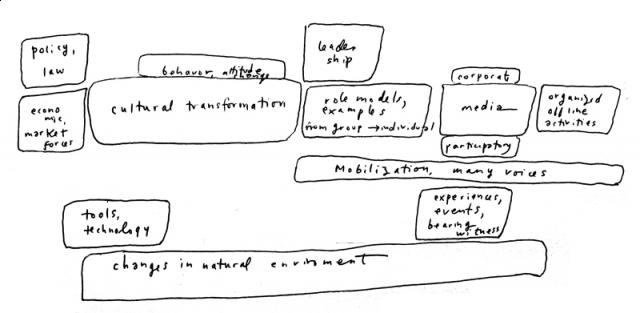In coming up with theories for change in Intro to Civic Media last week, many of us started or ended with the goal of policy change at the highest levels of government. My final project for the class, collecting and interpreting marketplace stories of origin, does not have a specific built-in policy goal, but rather attempts to analyze and participate in an existing cultural phenomenon. So I started thinking about the relationship between policy change and changes in modes of cultural production — for example, which policies (or, the absence of which policies that exist elsewhere) contributed to the emergence of persuasive storytelling on American product labels? will the work of my final project, analyzing and interpreting stories of origin, reveal policies that could be updated or reversed in the name of honest exchange between companies and consumers? More generally, how does a researcher identify relationships between policy and cultural production?
Because this project was born of an interest in how storytelling and myth-making serve society, I am especially interested in mapping relationships between historical/’traditional’ examples of origin stories and those we find attached to products in the post-industrial capitalist marketplace. In this long view, policy change is a part of larger network of transformations set in motion by multiple, collective and/or unknowing agents. When I tried to model this kind of long-term change, calling it ‘cultural transformation’, I ended up with an arrow-strewn diagram in which every factor pointed to and from every other factor. For the sake of improving my modeling skills, and to try to make room for the factors I am missing, I made a modular diagram in which factors can be moved around and extended/elaborated and new parts can be added. Here is a snapshot of my sketch:

Modeling cultural transformation is an ambitious project and this diagram that surely leaves out important factors and overemphasizes others, but it works as a starting point to think about the human agency and change, and the relationship between cultural production and policy, as I begin my research on storytelling.

